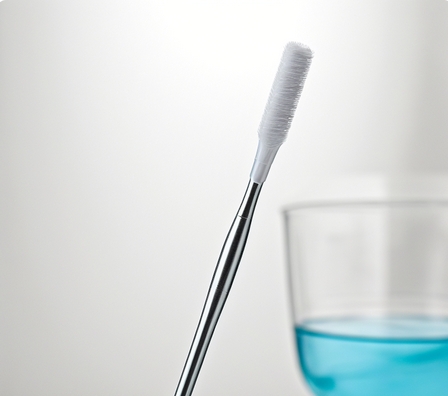
News and Blogs
Three key points of nasopharyngeal swab sampling: sensitivity advantage and operation specification analysis
Comparative analysis of clinical application of nasopharyngeal swabs and oropharyngeal swab
In the field of virus detection, the selection of sampling tools directly affects the reliability of diagnostic results. This paper compares the core differences between nasopharyngeal swabs and oropharyngeal swabs in four dimensions, and analyzes the key points of their application in combination with clinical practice data.
1. Different clinical application scenarios. Nasopharyngeal swabs mainly act on deep nasal sampling and are widely used in cases such as confirmed COVID-19 detection and influenza virus screening. Taking the research data of the New England Journal of Medicine as an example, the positive rate of nasopharyngeal sampling in the new coronavirus detection is 12-15% higher than that of oropharyngeal sampling. Oropharyngeal swabs are suitable for oral mucosal samples collection, and are commonly found in scenarios such as large-scale nucleic acid screening, EB virus detection, and oral cytology examination.
2. The difference between instrument structure design standards. In 150mm pharyngeal swabs, the breaking point of the nasopharyngeal swab is usually designed at 80mm, which is nearly three times longer than the breaking point of the 30mm of the oropharyngeal swab. This difference stems from the particularity of the nasal anatomy - nasopharyngeal sampling requires about 8-10cm deep into the nasal passage to reach the posterior nasopharyngeal wall. The two types of swabs generally use ABS engineering plastic rod body and nylon flocking head design, which not only ensures the rigidity of the operation but also improves the sample adsorption efficiency.
3. Standardized sampling process Comparison of oropharyngeal sampling requires the "three-zone wipe method": the subject's head is tilted back by 45 degrees, after the swab passes through the root of the tongue, rotates the left and right tonsil crypts 3 times each, and finally wipes it longitudinally on the posterior pharyngeal wall 3 times. Nasopharyngeal sampling emphasizes "gradual in-depth": slowly advance along the nasal septum to the nasopharyngeal cavity, and rotate 360° to complete mucosal cell collection after contacting the posterior wall. The US CDC guidelines specifically point out that the sampling angle of the nasopharyngeal swab must be kept parallel to the hard palate to avoid bleeding caused by touching the nasal turbinate.
4. Differential detection sensitivity analysis Clinical data show that the sensitivity of nasopharyngeal swabs is significantly better than oropharyngeal sampling. The 2021 Lancet study pointed out that in the detection of the new coronavirus, the viral load of nasopharyngeal samples is 1.5 logarithmic orders higher than that of the oropharyngeal samples. This difference stems from the fact that nasopharyngeal ciliary epithelial cells are more likely to enrich pathogens. However, it should be noted that nasopharyngeal sampling may trigger tear reflex (the incidence is about 23%), while oropharyngeal sampling can easily trigger pharyngeal reflex (the incidence is about 35%). It is necessary to choose flexibly according to the patient's tolerance during operation.
Medical institutions should choose to sample methods according to the purpose of the testing: nasopharyngeal swabs are recommended for diagnosis and testing, and oropharyngeal swabs can be used for screening scenarios. Operators need to receive standardized training to master the fracture mechanical characteristics and sampling angle control technology of different swabs to ensure that the sample quality meets laboratory testing standards.






